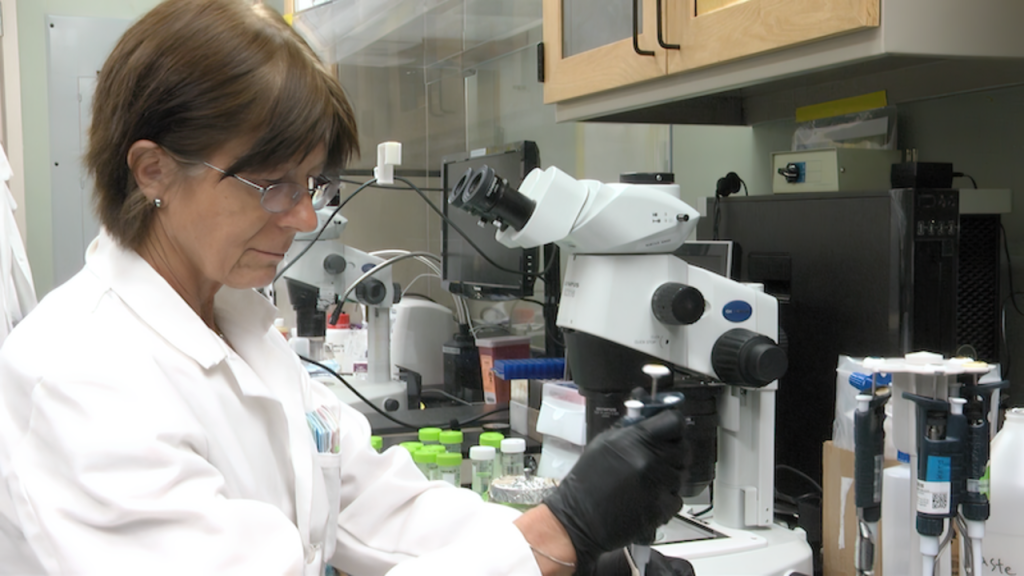 Monika Ward in her lab. (PC: UH Mānoa)
Monika Ward in her lab. (PC: UH Mānoa)
University of Hawaiʻi at Mānoa scientists have uncovered a direct link between a missing Y chromosome gene and male infertility.
In a study published Aug. 27 in Cell Death and Differentiation, researchers found that deleting the Zfy gene in mice not only caused infertility but also disrupted the activity of hundreds of other genes vital for healthy sperm.
The project was led by Monika Ward of UH Mānoa’s John A. Burns School of Medicine and the Yanagimachi Institute for Biogenesis Research. In mice, the Zfy gene exists in two versions, Zfy1 and Zfy2. Using CRISPR gene-editing, the team created mice missing one or both. Males lacking both—known as Zfy double knockouts—were completely infertile, producing abnormal or no sperm.
ARTICLE CONTINUES BELOW AD
“This work really pushes forward our understanding of how this important Zfy gene works,” Ward said. “We identified pathways and other genes that are affected and we can now study how exactly Zfy regulates them.”
To continue investigations, the researchers turned to assisted reproduction techniques pioneered at UH, including intracytoplasmic sperm injection (ICSI) and round spermatid injection (ROSI). This allowed them to examine the molecular consequences of Zfy loss.
The results revealed that without Zfy, hundreds of genes became misregulated—some too active, others too weak. Many of these genes are responsible for sperm production, DNA packaging and cell survival. As a result, sperm precursor cells in the testes died off early, and the sperm that did form carried fragile DNA that wasn’t properly condensed.
ARTICLE CONTINUES BELOW AD
The work included significant student contributions. First author Hayden Holmlund completed his PhD at UH before moving to a postdoctoral fellowship in California, while undergraduate student Benazir Yarbabaeva has since joined UH’s graduate program to continue the research.
ARTICLE CONTINUES BELOW ADARTICLE CONTINUES BELOW AD
The work also included contributions from colleagues in France and England. Read more here.